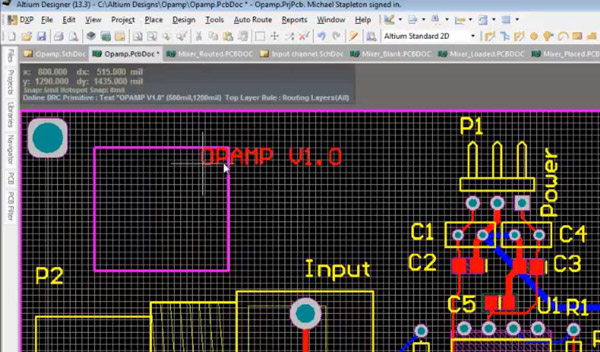

For a transistor-based comparator, hysteresis can be applied to the output voltage with another positive feedback loop using a voltage divider. The positive feedback loop with high gain ensures the output is saturated at the supply rails as soon as the input voltage falls above or below 0 V.įor Schmitt triggers, hysteresis is intentionally added to set the switching threshold to some desired value. The circuit below shows a comparator built from an op-amp where the positive feedback loop causes saturation at the supply rail voltages.Ĭomparator circuit built from an op-amp. There is always a small hysteresis window in comparator circuits so that they can withstand ~10 mV of fluctuations in the input. The reference voltage to induce switching can be set by placing pull-up and pull-down resistors around the inverting input (or the non-inverting input for an inverting comparator). For a comparator, the output is saturated at the supply rail voltages, and the output will cycle between the positive and negative saturation voltages (e.g., rail-to-rail). Both types of circuits use hysteresis to set a threshold for switching between two saturated states. All Schmitt triggers are comparators, but not all comparators are Schmitt triggers. Schmitt triggers are often compared to comparator circuits, as their behavior is quite similar. A comparator and Schmitt trigger are similar, but they are not the same circuit. In fact, you can use an op-amp to construct a Schmitt trigger circuit by saturating the differential input, although this is not desired in high-speed circuitry.Ī Schmitt trigger is related to another important type of two-state digital circuit: a comparator. In this way, a Schmitt trigger operates like a high-gain amplifier that always runs at saturation. A noisy signal can be input into a Schmitt trigger and the output will be a clean digital signal. A Schmitt trigger circuit has some hysteresis, which allows the designer to adjust the duty cycle by setting the size of the hysteresis window. Schmitt triggers are simple circuits that accept an oscillating signal (e.g., a sawtooth or triangle wave) and output a square wave. Here’s what you need to know about designing Schmitt triggers for various applications and how they can help you condition signals. When you need to evaluate your circuit, you can run some simple SPICE simulations to test circuit behavior and verify that components will function as desired. If you’re designing a Schmitt trigger circuit for cleaning up noisy signals and producing digital pulses, you’ll likely find that the classic circuit diagram for Schmitt triggers is surprisingly resilient until you get up to very high frequencies. Although these circuits are similar to amplifier circuits and even use the same symbol in a schematic, they operate quite differently. There are many different Schmitt trigger components and ICs, but they all rely on two important properties for rectification and stabilization of noisy input signals: saturation and hysteresis.

Schmitt triggers are fundamental circuits in ICs and simpler PCBs, and they can play an important role in cleaning up signals for use in other digital circuits. You can take a noisy analog input and create a clean clock signal with Schmitt triggers. If you’re designing a module or IC as a high-frequency Schmitt trigger, you need the right simulation tools to evaluate your design for generating a pulse stream. This device can use hysteresis to output a stream of digital pulses from a noisy reference waveform.Ī Schmitt trigger acts like an amplifier/comparator with hysteresis where hysteresis is controlled by adjusting the collector resistance in two transistors.

Start-to-finish hardware ownership: Specification, architecture, design, simulation, schematic, layout supervision, prototype, validation, and manufacturing of circuit boards.An important IC for creating clean digital pulses is a Schmitt trigger. We control hundreds of electrical devices including motors, sensors, switches, and LEDs to power user-facing systems such as seats, doors, HVAC, powertrain, safety, chassis, exteriors, lighting, and more. Our goal is to design circuit boards to distribute power from the battery to each electrical device as efficiently as possible. The Low Voltage Hardware team is responsible for designing the electrical “nervous system” of Tesla vehicles.


 0 kommentar(er)
0 kommentar(er)
